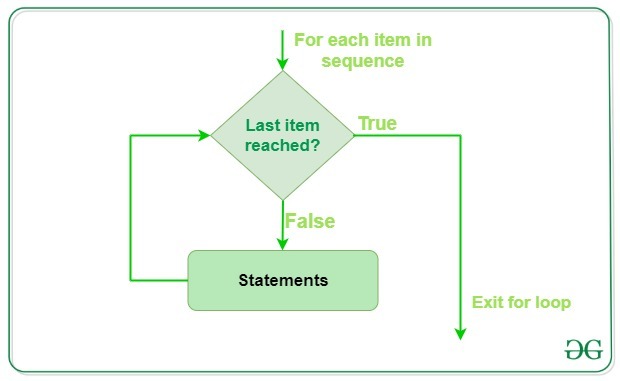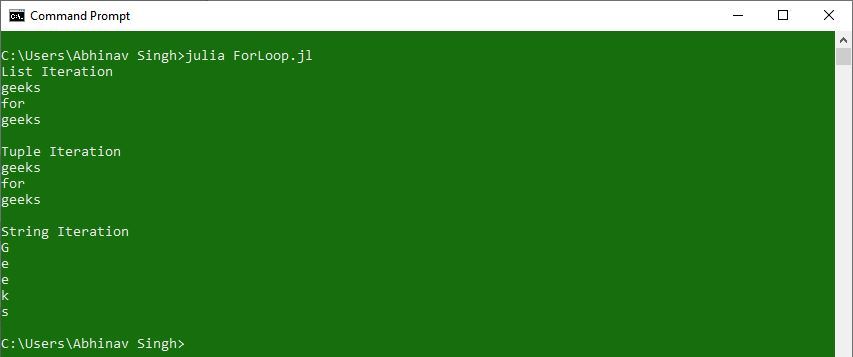For loop in Julia
Last Updated :
19 Feb, 2020
For loops are used to iterate over a set of values and perform a set of operations that are given in the body of the loop. For loops are used for sequential traversal. In Julia, there is no C style for loop, i.e., for (i = 0; i < n; i++). There is a "for in" loop which is similar to for each loop in other languages. Let us learn how to use for in loop for sequential traversals.

Syntax:
for iterator in range
statements(s)
end
Here, ‘for‘ is the keyword stating for loop, ‘in‘ keyword is used to define a range in which to iterate, ‘end‘ keyword is used to denote the end of for loop.
Example:
print("List Iteration\n")
l = ["geeks", "for", "geeks"]
for i in l
println(i)
end
print("\nTuple Iteration\n")
t = ("geeks", "for", "geeks")
for i in t
println(i)
end
print("\nString Iteration\n")
s = "Geeks"
for i in s
println(i)
end
|
Output:

Nested for-loop: Julia programming language allows to use one loop inside another loop. The following section shows an example to illustrate the concept.
Syntax:
for iterator in range
for iterator in range
statements(s)
statements(s)
end
end
Example:
for i in 1:5
for j in 1:i
print(i, " ")
end
println()
end
|
Output:

Share your thoughts in the comments
Please Login to comment...